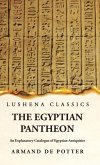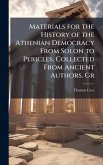Aegyptiaca presents a detailed catalogue of Egyptian antiquities collected in the years 1856 and 1857 by Charles Nicholson, now housed in the Museum of the University of Sydney. This meticulously compiled record offers insights into a significant collection of artifacts, providing valuable information for Egyptologists, historians, and collectors alike. Beyond the catalogue, the book delves into an account of the remains of the "Disk Worshippers," shedding light on this ancient religious sect. Also included are some funereal hieroglyphics, offering glimpses into ancient Egyptian burial practices and beliefs about the afterlife. This volume serves as a crucial resource for understanding the breadth of Egyptian culture and history as represented through tangible artifacts and religious symbolism. Nicholsonâ(TM)s work remains relevant for researchers and enthusiasts interested in Egyptology and the history of collecting. This work has been selected by scholars as being culturally important, and is part of the knowledge base of civilization as we know it. This work was reproduced from the original artifact, and remains as true to the original work as possible. Therefore, you will see the original copyright references, library stamps (as most of these works have been housed in our most important libraries around the world), and other notations in the work. This work is in the public domain in the United States of America, and possibly other nations. Within the United States, you may freely copy and distribute this work, as no entity (individual or corporate) has a copyright on the body of the work. As a reproduction of a historical artifact, this work may contain missing or blurred pages, poor pictures, errant marks, etc. Scholars believe, and we concur, that this work is important enough to be preserved, reproduced, and made generally available to the public. We appreciate your support of the preservation process, and thank you for being an important part of keeping this knowledge alive and relevant.
Bitte wählen Sie Ihr Anliegen aus.
Rechnungen
Retourenschein anfordern
Bestellstatus
Storno








